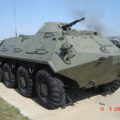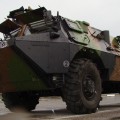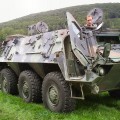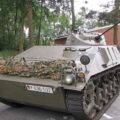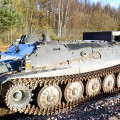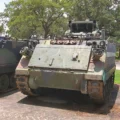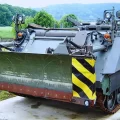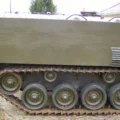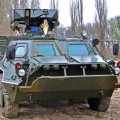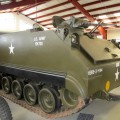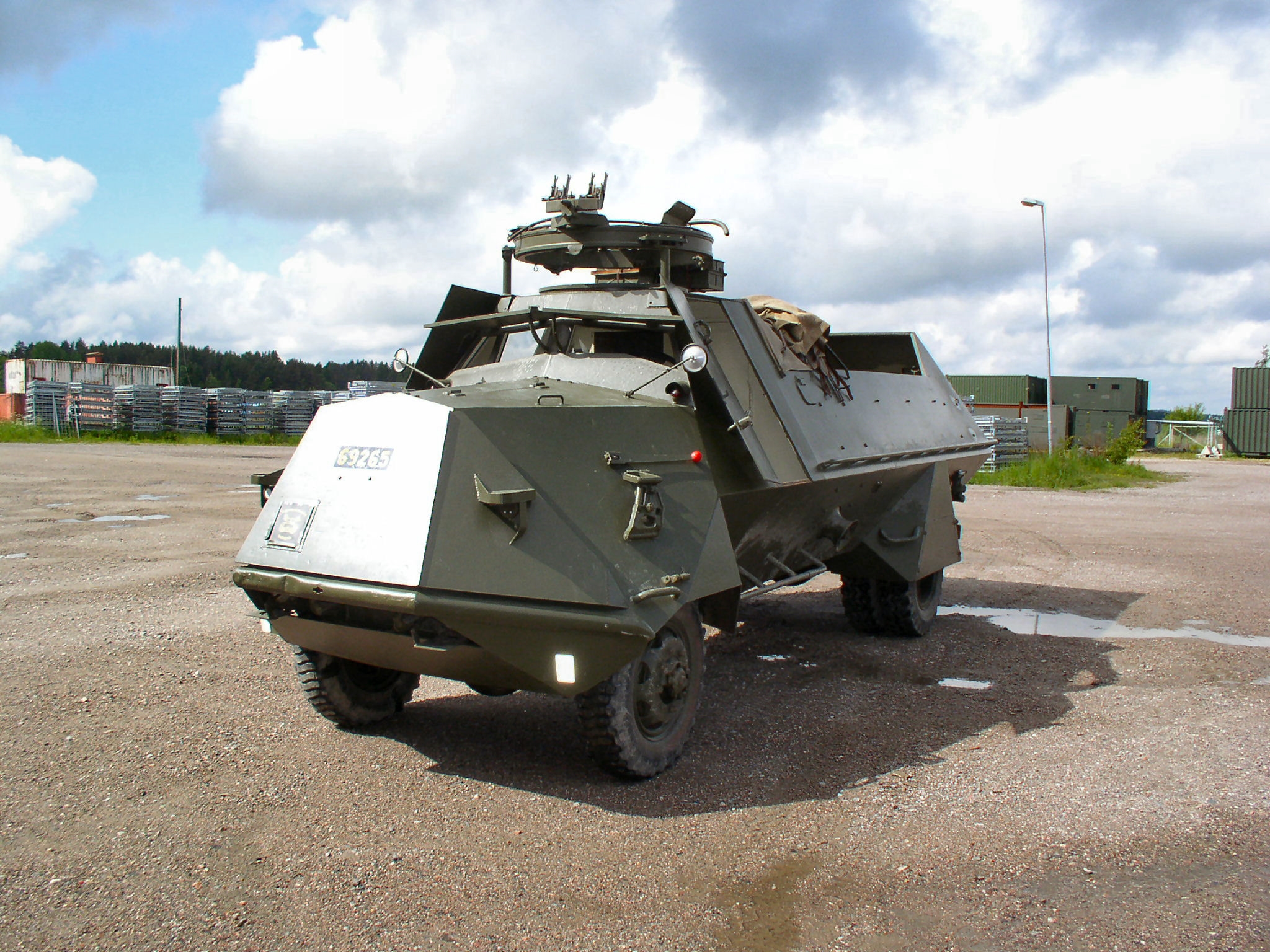
SKP M-42 | |
| Land | Sverige |
| Type | Pansret mandskabsvogn |
| Fotografi | Thord Wedman |
| Emne | Album med 16 fotos walk-around af en «SKP M-42» |
Fotogalleri af en SKP M-42, Terrängbil m/42 KP (Tgbil m/42 SKP/VKP), meaning “Off-road vehicle 42” with a secondary designation of “Scania, Bodywork: Armoured” or “Volvo, Bodywork: Armoured”, was the Swedish army’s first armoured personnel carrier, developed as a stop-gap measure during World War II. In 1941, when tanks were organized into a unit of their own, it was clear there was a desperate need for a troop carrier able to both keep up with the tanks and provide protection against artillery shrapnel and small-arms fire. Due to the war there were no international suppliers to buy from, so the only option was to develop a domestic solution. AB Landsverk designed an APC consisting of a chassis from a regular army lorry equipped with an armoured shell.
Kilde: SKP M-42 på Wikipedia
Se også:
Den Terrängbil m/42 KP (tgb m/42 KP), meaning “terrain car m/42 KP” (KP standing for Karosseri Pansar, “Coachwork Armour”), was an early Swedish infantry fighting vehicle developed during World War II. It was essentially a flatbed truck with 4-wheel drive for off-road driving, fitted with an armoured body elongated over and around the bed, with a troop transport compartment behind the cabin for a squad of 16 soldiers.
Varianter:
Two base variants existed based on the chassis:
– Scania-chassis-based variant, designated the “tgb m/42 SKP” (Scania KP)
– Volvo-chassis-based variant, designated the “tgb m/42 VKP” (Volvo KP)
Technical Description:
The armoured body featured 8 to 20 mm (0.31 in to 0.79 in) thick welded sloped armour all around, making it effectively bullet-proof. For disembarking and boarding, the troop compartment had an armored hatch on each lower side of the vehicle, right in front of the rear axle wheels.
The troop compartment originally lacked a fixed roof and had partially open sides meant for the infantry to shoot from. Instead of a fixed roof, the back end of the body had full height sides so a tarpaulin could be fitted over the troop compartment between the cabin.
In 1983, most remaining vehicles were updated with a new fully enclosed troop compartment with firing ports and a back door for fast disembarking.
While always intended for fixed armament, featuring a round hatch sized hole on the cabin roof, the vehicles initially lacked any permanent armament, and the cabin roof hole was often bolted over with a metal plate. Instead, the vehicles were outfitted with storage for the weaponry, munition, and equipment of the panzergrenadiers, such as machine guns, hand grenades, and man-portable anti-tank systems.
One vehicle was early on trialed with a 20 mm akan m/40 autocannon, but the first standard fixed armament was a single ksp m/39 machine gun fitted in a rotating turret ring on top of the cabin. This machine gun could fire either the 8×63mm m/32 machine gun cartridge or the 6.5×55mm m/94 rifle cartridge depending on the barrel.
In 1956, the existing vehicles received new armament in the form of twin ksp m/36 lv dbl (luftvärn dubbel) anti-aircraft machine guns. These could also fire the 8 mm m/32 and 6.5 mm m/94 rounds depending on the barrel (post 1972 also the 7.62×51mm NATO round).
During the 1983 REMO-upgrade, the ksp m/36 twin-mount was replaced with two 7.62 mm ksp m/58B light machine guns in single mounts, one on the cabin roof and one at the back of the new troop compartment roof. The new enclosed compartment also featured three portholes on each side of the vehicle for use as firing ports with assault rifles.
Views : 2250


